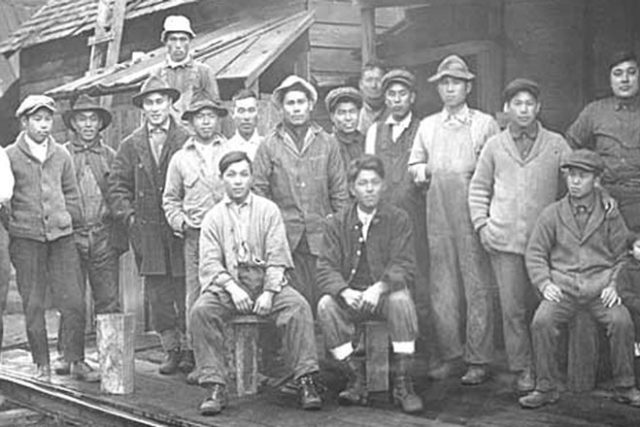
With the waning of Indian summer, on beautiful Sept. 10, I wanted to take one last drive out of town. And so that mid-day sun found me plying state highways 507 and 6, which parallel I-5 south of Seattle. Those roads brought me to Walville, a now vanished sawmill town that once housed a few dozen Japanese sawmill workers.
I first wrote of the Walville Japanese cemetery—pretty much all that remains of Walville—in June 2007. Then, it was well-kept and apparently frequently visited. A split-rail cedar fence and bilingual signs in Japanese and English, made in 1996, still looked fresh. Moreover, there had been a path on the forest floor worn by the passing feet of visitors. Then, I remember leaving the place feeling good, that people still remembered and cared for the quiet resting place.
This time, the fence was falling apart, a victim of the intense rain that haunts the coast ranges. The English sign is missing, probably stolen, for nothing of it remains. Further, the path on the forest floor has been replaced by a carpet of thick moss, through which forest frogs leap.
What was clear at once from the contrast this time is that living people who remember the residents of Walville, if they still breathe, no longer make the journey. Thus, the forest is beginning to reclaim the cemetery, much as it is re-clothing the wastelands left by the early Northwest logging that sheared them.
On the positive side, today much more information is readily accessible about Walville on the Internet. There are historical photos accompanied with essays. Notably, many of the old images were taken by photographer Darius Kinsey, who is known for his work capturing the lives of Northwest forest workers.
To Kinsey’s credit, he took the time to photograph the Japanese workers. It must have been a special day for them, in the otherwise tedious lives of rural sawmill workers. However, photographing these likely least-paid mill workers apparently didn’t pay, for it is only one of two Kinsey photos of such workers I have seen, in contrast to the dozens of those of white workers in the 319-page coffee-table book surveying the master craftsman’s career (Dave Bohn & Rodolfo Putsches, 1978, “Kinsey, Photographer,” Fifth printing, 1986, Chronicle Books, San Francisco).
To visit the cemetery, take route 6 west from I-5 at Chehalis towards South Bend, keeping in mind that the I-5 exit offers the last gas and food available on route 6. Just past the Pacific/Lewis county line, turn right onto Walville Road. Cross the creek and bear right, watching for the cemetery on your left a short distance past the crossing. Note that after passing the cemetery, there is a turn-around for the narrow road at the locked gate beyond it. A map on the web shows the general layout of the former mill town and its Japanese neighborhood.







